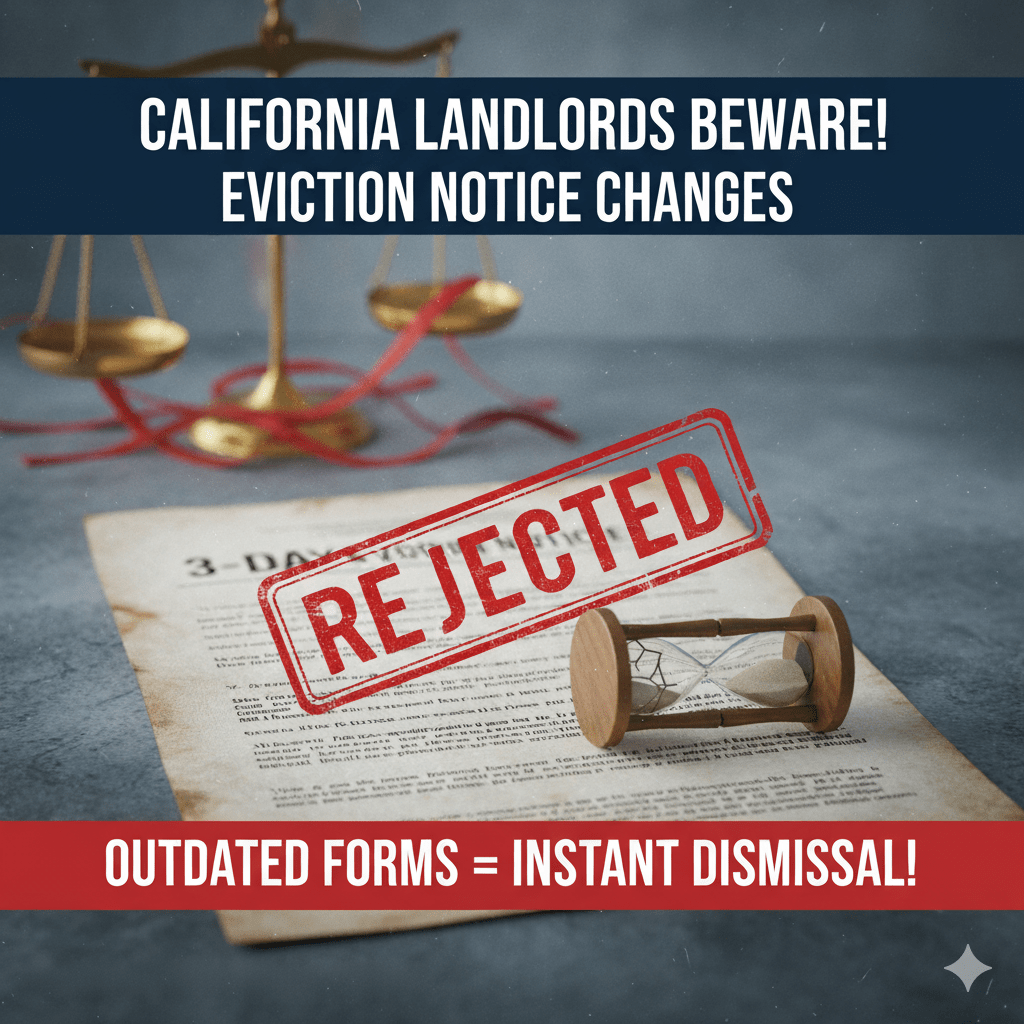
In the fast-moving world of California landlord-tenant law, even the most meticulous property owners can be caught off guard by a single court ruling. If you manage rental properties in California, the recent Eshagian v. Cepeda(2025) decision from the Court of Appeal is an immediate, high-stakes wake-up call. This ruling has drastically tightened the requirements for the foundational document of nearly every eviction: the 3-Day Notice to Pay Rent or Quit.
Relying on old, “good enough” templates now carries a significant risk: the immediate dismissal of your unlawful detainer (eviction) case. Here’s a breakdown of the major changes and what you must do right now to ensure your notices are legally sound and your property rights are protected.
Why Your Current 3-Day Notice is Likely Non-Compliant
The Eshagian v. Cepeda ruling emphasizes that an eviction notice must provide absolutely clear, error-free instructions to the tenant to meet the requirements of due process. Vague language or incorrect calculations are no longer minor errors; they are fatal flaws.
The court has mandated that the new, stricter standard for compliant 3-day eviction notices must explicitly address three critical areas:
1. Clarity on Service Date and Notice Period
It’s no longer enough to simply hand the notice to the tenant. The notice must clearly establish the timeline, removing any possible ambiguity for the tenant or the court.
Actionable Insight: Your updated notice template must explicitly state the actual date of service and unequivocally communicate the last day of the three-day compliance period. This precision ensures the tenant knows exactly how long they have to remedy the situation before the landlord can file a complaint.
2. Excluding Weekends and Judicial Holidays from Payment Instructions
This is one of the most common pitfalls. The tenant’s three-day period to comply does not count Saturdays, Sundays, or judicial holidays. If your notice instructs the tenant to pay by a day that falls on a holiday or weekend, it misleads the tenant and invalidates the notice.
Actionable Insight: The instructions for payment must account for and exclude weekends and judicial holidays. For example, if the three days expire on a Saturday, the notice period legally extends to the following Monday. Your notice needs to reflect this extended deadline accurately, ensuring the tenant has the full, legal timeframe.
3. Explicitly Explaining Nonpayment Consequences (Beyond “Pay or Quit”)
The court wants tenants to fully understand the gravity of the notice. Simply writing “Pay or Quit” in the title is insufficient.
Actionable Insight: You must include clear, concise language in the body of the notice that explicitly explains the consequences for nonpayment. This means stating that failure to pay the exact amount of rent demanded within the three-day period will result in the forfeiture of the lease and the commencement of a formal unlawful detainer (eviction) lawsuit.
Your Urgent Call to Action for Compliance and Risk Reduction
The consequences of non-compliance are severe: your eviction case will be dismissed, forcing you to start the entire, costly process over with a new, corrected notice. This adds weeks of lost rent and thousands of dollars in legal fees.
Immediate Steps for Landlords and Property Managers:
- Stop Using Old Templates: Immediately retire any 3-day notice form currently in use that has not been specifically updated to comply with the 2025 Eshagian v. Cepeda standards.
- Consult Legal Counsel: Have your current or new eviction notice templates reviewed by a qualified California landlord-tenant attorney. This is a non-negotiable expense to secure your investment.
- Train Your Team: Ensure everyone involved in serving notices—including managers and support staff—understands the strict legal deadlines, holiday exclusions, and mandatory disclosure requirements.
Protect Your Investment: Don’t Let an Outdated Form Be Your Downfall
In California, being a landlord means staying ahead of the legal curve. The Eshagian v. Cepeda ruling underscores a fundamental truth: successful property management hinges on legal precision. Don’t risk months of lost rent and mounting legal fees on an outdated piece of paper. Review your procedures, update your forms, and protect your right to reclaim your property.
Need help navigating the complexities of California’s rapidly changing eviction laws? Our property management experts specialize in legal compliance and risk mitigation. Contact us today to ensure your documents and procedures meet the highest legal standards.

Kurt Galitski- Principal, Broker
(949) 688 7705 | DRE #: 01348644